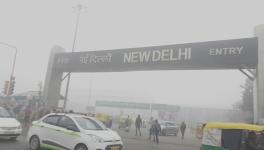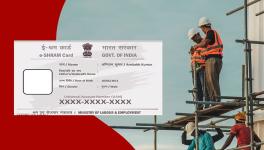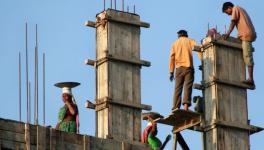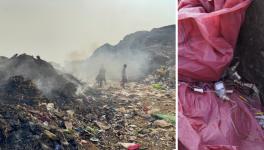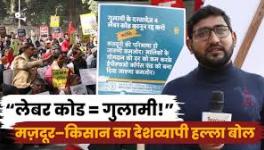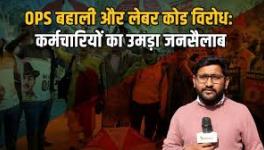Delhi-NCR Winter Pollution: Same Refrain Every Year
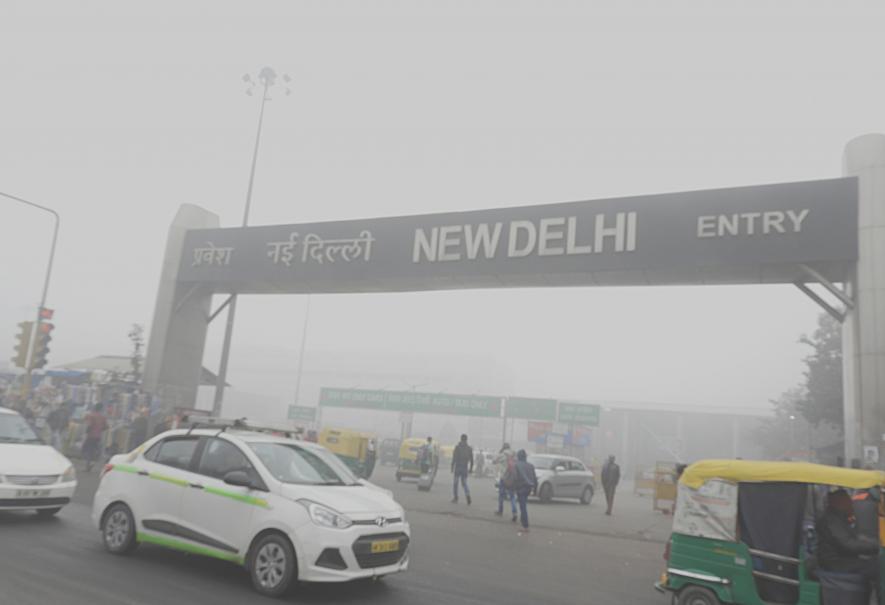
Image Courtesy: Wikimedia Commons
We are once again in the midst of the seemingly inevitable problem of air pollution in Delhi and the neighbouring National Capital Region. The Air Quality Index (AQI) over the past fortnight shot up to “very poor” and even reached the “severe” category for a few days around Diwali. The situation was exacerbated, as usual, by seasonal pollution-generating activities and seasonal as well as other weather conditions.
Burning of paddy straw in Punjab and Haryana, and marginally in Western Uttar Pradesh, temporarily raised pollution levels as it does each year at this time, in the absence of effective preventive measures. This prompted the customary poorly-informed hysteria in the media, among ruling political dispensations in States concerned and in the Centre, each with its own axe to grind, and of course at the Supreme Court expressing indignation at the weak compliance with its often peremptory and unrealistic orders.
So let us, once again, unpack the different elements of this recurrent problem, and hopefully bring forward some new or updated information and pointers to more effective policies to tackle air pollution, especially but not exclusively with reference to the North Indian plains.
Stubble Burning
This hardy annual feature, while undoubtedly a serious problem, has served and been used, to make scapegoats of already much-suffering farmers and to divert attention from the main causes of air pollution and its mitigation.
A little known fact totally ignored by media reporting is that the problem of stubble burning is not confined to north-western India but is widespread across the world even today, including in the US, Europe, Australia and China, for basically the same reason of providing a least-cost option.
Only China has banned stubble burning, although the practice continues unabated, while others regulate it to some or other degree. (See https://en.wikipedia.org/wiki/Stubble_burning). While much has been made in India of NASA satellite imagery of stubble fires in Punjab, similar images from the US have been ignored.
A good foot or more of paddy straw is left behind by combine harvesters after the harvest in mid-September to mid-October in Punjab, Haryana and parts of West UP. Farmers have barely two weeks to get their fields ready for planting of the winter wheat crop. In this short time, burning the stubble is the least-cost and time-effective option.
State governments concerned have sought to make available machines to cut and chop the stubble, or plough it back into the soil, but these have found little acceptance among farmers due to relatively high cost of Rs.2 lakh or more for machines that will be used just once a year for a few days. Efforts to provide such machines to village institutions have also not worked due to institutional weaknesses and problems in timely rotation of machines between the farmers.
Solutions
Farmers have repeatedly demanded State funding of around Rs.1,000 per acre to enable them to defray additional labour costs or to build such amounts into the procurement price. This, too, has come to naught with cash-strapped state governments and the Centre passing the buck to each other. Thunderous and threatening orders by the Supreme Court, and by Pollution Boards and State Governments under pressure from courts, have been ignored and rendered impossible to implement.
A recent “solution” being touted by the Delhi Government is a straw decomposer developed by the Indian Agricultural Research Institute (IARI) at its Pusa campus in Delhi. This consists of a variant of a well-known biomass decomposition technique, this time using a fungal product capsule providing multiple bio-organisms that accelerate the formation of manure that can be ploughed back into the soil.
The IARI product is fermented in water for a week, added to jaggery, chickpea flour etc and sprayed on to the stubble, which is then decomposed in another three weeks in all, compared with natural decomposition taking around three months. The decomposition time is also dependent on local temperature and other weather conditions.
While the technique has been hyped by the Delhi government as a silver bullet, how effective it is, will be known only after ongoing field trials. It may be noted, however, that the time taken is much longer than the shorter window that farmers have. Further, effectiveness of the technique increases if the straw is cut and decomposed separately while any remaining stubble and roots are treated in parallel, calling for even more labour, time and effort of the farmer.
As repeatedly argued in these columns, the only real, long-term solution lies in State-supported institutional arrangements for deployment of suitable machinery for cutting and baling the straw at village level. These operations could be monetised by sale to numerous user industries for power generation, cardboard and particle board manufacturing, briquetting etc, with more industries being incentivised.
Industries in Punjab and Haryana have urged this approach and attest to its viability. But this calls for effort by state governments with support from the Centre, whereas everyone from SC downward only wants solutions at a snap of their fingers.
Stubble-Burning Not Main Problem
The contribution of airborne pollutants from the brief seasonal stubble burning to pollution in Delhi-NCR has also been exaggerated, and provides an alibi to other major year-round culprits.
Data from SAFAR (System of Air Quality and Weather Forecasting & Research) shows that pollutants from stubble burning in Punjab and Haryana constitute, on most days, only around an average 6% of total PM2.5 and PM10 pollutants. This number can go up to 16%-25% during very short transient periods of a day or two due to weather and local conditions.
Wintery conditions and cold air lead to particulate pollutants staying close to the surface, worsening as temperatures dip further. Low surface winds, combined with fog with moisture weighing down the pollutants, exacerbate the problem. Boundary layer winds higher up play a big and varying role, with north-westerly winds bringing in airborne pollutants from Punjab and Haryana. Stronger winds carry pollutants away while still air keeps pollutants in the region, and easterly winds keep pollutants away.
A rarely if ever discussed aspect is the trapping of airborne particulate pollutants in urban agglomerations like in Delhi-NCR, due to obstruction, especially of surface winds that could help disperse the pollutants. This also explains why Delhi-NCR sees AQI of 400+, while towns and cities in Punjab and Haryana close to stubble-burning regions have AQI of 150 or so, leading to much sarcastic comment from farmers there!
Real Culprit Gets Away
Meanwhile, the real culprit escapes the attention of the public and is deliberately shielded by policy makers, the executive and the judiciary. Vehicles contribute around 40% of pollutants year round, a far greater problem than the few percentage points of additional pollution for a few weeks due to stubble burning.
Road dust contributes another 20-odd percentage, worsened by the same vehicles throwing up the dust and keeping it airborne. Yet, nothing is done about the sources of this high base load of particulate and other pollutants, which are the major, real and year-round causes.
The Graded Response Action Plan (GRAP), which used to be monitored by the SC-appointed Environment Pollution (Prevention and Control) Authority or EPCA, recently been dissolved by the Centre, calls for increased frequency of Metro and bus services and enhanced parking fees by 3-4 times even at the third-ranked “very poor” category of air pollution levels. Yet, these steps were not been introduced even at the higher “severe” levels seen recently.
The odd-even policy that would sharply reduce the number of personal vehicles, as well as stopping out-of-state trucks from entering Delhi and stoppage of construction work, all kick in only at the highest “Emergency of Severe+” levels yet to be seen. How then can air pollution be checked in Delhi-NCR? Surely not by fanciful and unscientific “smog towers” incredibly mandated by the Supreme Court with little expertise or jurisdiction in the area.
There is strong argument for introducing the above measures at earlier GRAP levels and strictly enforcing them. But convenience of upper-income sections and interests of the automobile and construction industry are clearly taking precedence over the health and well-being of citizens and over the much-needed battle against air pollution.
Meanwhile, air pollution is taking an ever-higher toll in times of COVID-19. Wintery conditions keep the particulate pollutants in the air longer, aiding in transmission of the virus, while already weakened lung performance makes people more vulnerable. Truly, a perfect storm.
Get the latest reports & analysis with people's perspective on Protests, movements & deep analytical videos, discussions of the current affairs in your Telegram app. Subscribe to NewsClick's Telegram channel & get Real-Time updates on stories, as they get published on our website.









